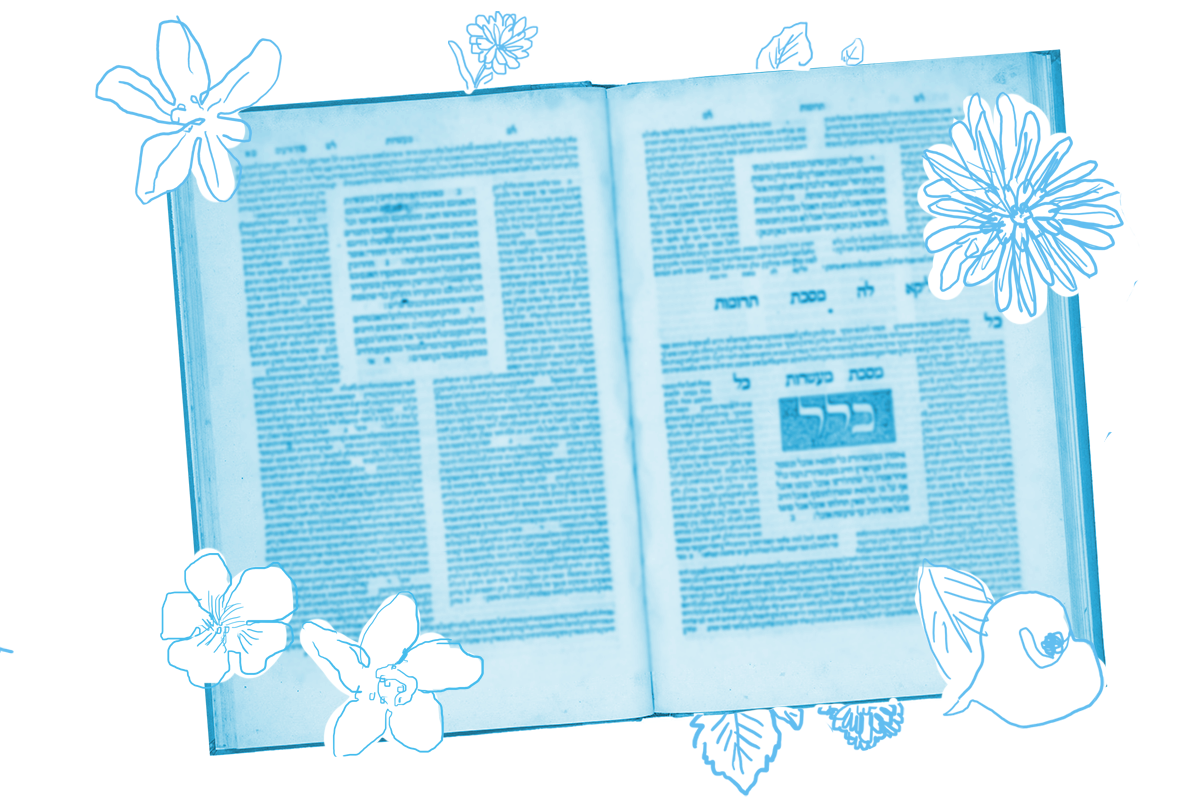These days, Rosh Hashanah (literally: “head of the year”) is one of the most recognizable Jewish holidays — and, along with Yom Kippur, one of the most solemn. Growing up, my public school closed for the first day of Rosh Hashanah (but not the first day of Passover) and I have found this is true for my kids as well. So some may be surprised to learn that the Torah makes no mention of Rosh Hashanah — at least not by name, and not as the beginning of the year. In fact, from the Torah’s perspective, the beginning of the year isn’t even the autumn month of Tishrei — it’s the spring month of Nisan (Exodus 12:2). The year begins, appropriately enough, in the season of redemption and rebirth.
The Hebrew term rosh hashanah does appear in the prophetic book of Ezekiel (40:1), but as you can see I’ve rendered it in lowercase because there it refers rather non-specifically to the beginning of the year. Indeed, that verse states: “In the 25th year of our exile, the 14th year after the city had fallen, at the beginning of the year (rosh hashanah), the 10th day of the month … the hand of the Lord came upon me.” Whatever day Ezekiel is talking about (the sages understand it to be Yom Kippur of a jubilee year), Rosh Hashanah as a first-of-the-month holiday of repentance and new year celebration isn’t mentioned here.
What we call Rosh Hashanah is, in the Torah, Yom Teruah — Day of Blasting (of the shofar, of course). This language is used in the Kiddush recited on Rosh Hashanah. Yom Teruah is mentioned in Numbers 29:1 as a festival: “In the seventh month, on the first day of the month, you shall observe a sacred occasion: you shall not work at your occupations. You shall observe it as Yom Teruah.” As noted above, in the Torah’s reckoning, Tishrei is not the first month (as it is on contemporary Jewish calendars) but the seventh. Notice too that the only major feature of Yom Teruah, aside from being a festival on which no work is performed (as those of you who joined us for Tractate Beitzah now well know), is the blasting of the shofar (see also Leviticus 23:24).
So how do we square Ezekiel’s statement that the year begins in Tishrei with the Torah’s certainty that it begins in Nisan? In some ways, Tractate Rosh Hashanah is a response to this conundrum.
With your help, My Jewish Learning can provide endless opportunities for learning, connection and discovery.
As is so often the case for the rabbis, they respond with the same spirit that keeps improvisational comedy afloat: yes, and. Yes, Nisan is the beginning of the year. Yes, Tishrei is the beginning of the year. And what’s more … well, I’ll let the first mishnah of the tractate speak for itself:
They are four New Years:
The first of Nisan is the New Year for kings; and for festivals.
The first of Elul is the New Year for animal tithes. Rabbi Elazar and Rabbi Shimon say the New Year for animal tithes is on the first of Tishrei.
The first of Tishrei is the New Year for years, for sabbatical years and jubilee years, for planting, and for tithing vegetables.
On the first of Shevat is the New Year for trees, according to Beit Shammai. Beit Hillel say the 15th.
Surprise! There aren’t just two new years — there are four. Each new year is attached to significant cycles. We do this too in our modern secular lives. We count each calendar year starting January 1st, but a traditional school year starts sometime in early fall. And if you’re a farmer (or a baseball player), your year begins in the spring.
Likewise, the sages counted years starting on the first of Tishrei, but calculated animal tithes on the first of Elul (though Rabbi Elazar and Rabbi Shimon took exception) and the age of trees according to the month of Shevat (specifically the 15th according to Beit Hillel, creating a tax deadline that the kabbalists later rendered into the beautiful ecological holiday of Tu Bishvat). The sages counted festivals beginning in Nisan, meaning that each Passover was paired with the Shavuot and the Sukkot that followed as one cycle of pilgrimage festivals.
Naturally, this mishnah sets us up to discuss many interesting aspects of the Jewish calendar and how it operated in antiquity. But we’ll get back to the holiday at hand and learn about Rosh Hashanah and its signal commandment — blasting the shofar — soon enough. It’s a quick tour — just 35 pages — so enjoy the ride!
Read all of Rosh Hashanah 2 on Sefaria.
This piece originally appeared in a My Jewish Learning Daf Yomi email newsletter sent on October 11th, 2021. If you are interested in receiving the newsletter, sign up here.



